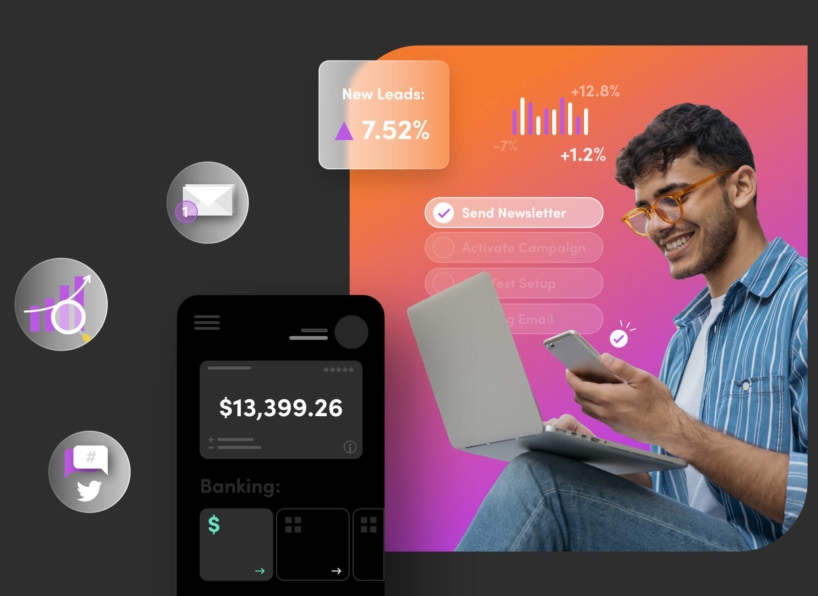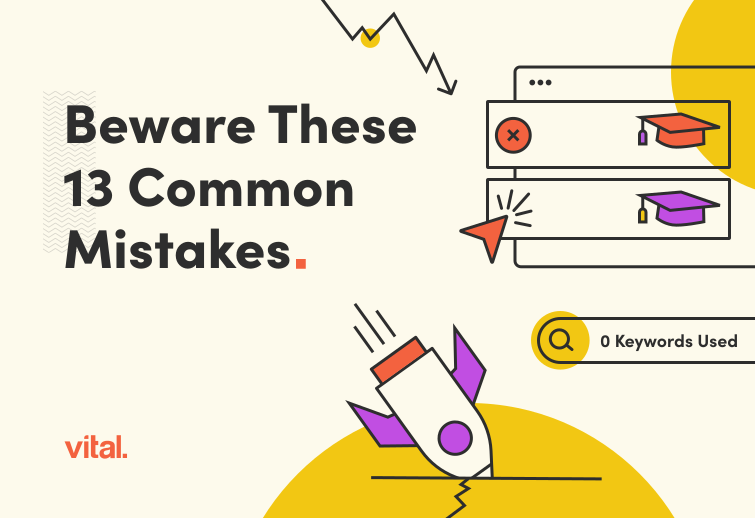A top-priority goal of every fintech marketer is to get more high-quality leads that develop into sales. But while the goal might be the same, the strategy and tactics that will help you hit your numbers vary greatly from brand to brand. That’s because no two fintech companies’ products or customers are the same.
The purpose of this blog post is to help you identify an overall approach to your fintech marketing strategy that will help you generate qualified leads, no matter what you make or whom you sell to. We call that approach “inbound marketing,” and it’s an essential pillar of any fintech brand’s marketing mix.
What Is Inbound Marketing?
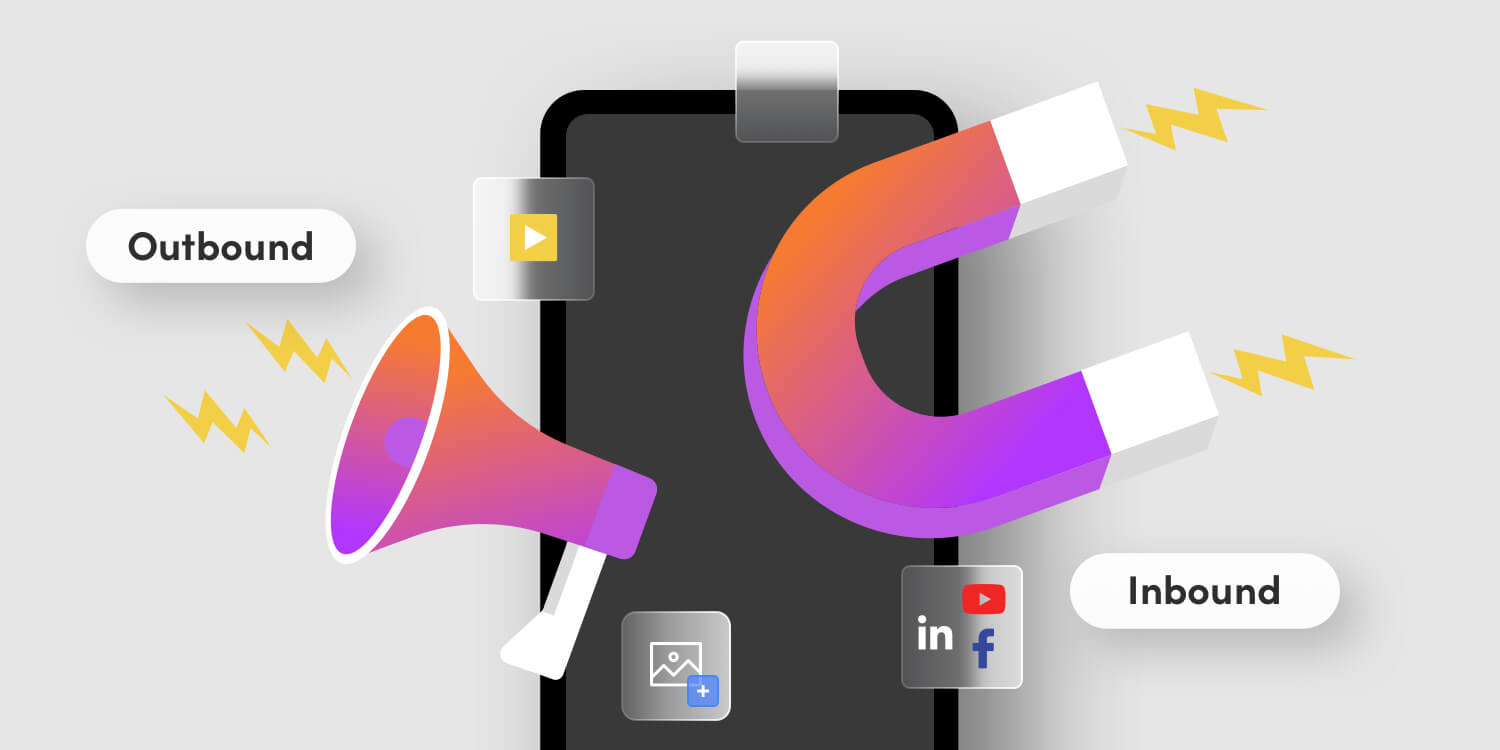
Inbound marketing refers to any marketing tactics that attract potential customers who are actively looking for information or solutions to the problems or pain points that your products address.
A great example of inbound marketing that we’ll go over in more detail below is search engine optimization (SEO). When you optimize your website for search, you increase traffic from people who are searching for the terms you choose to focus on. You don’t go looking for these searchers; you publish helpful, informative content that ranks for relevant keywords, and the traffic comes to you.
The opposite of inbound marketing is outbound marketing. With outbound marketing, you target your audience with advertising or other marketing communications that they’re not actively looking for. Examples of outbound marketing include TV ads, over-the-top (OTT) ads on streaming platforms, unsolicited emails, and out-of-home (OOH) advertising such as billboards.
Which Is Better: Inbound or Outbound Marketing?
There is a ton of research and writing out there about the relative effectiveness (and cost-effectiveness) of inbound marketing vs. outbound marketing. Generally accepted wisdom holds that outbound marketing has better short-term results and higher long-term costs. Inbound marketing can take longer to gather momentum and show results, but the long-term return on investment (ROI) is usually higher.
In reality, it’s not that cut and dry. Inbound marketing is an indispensable part of most companies’ strategies — but not all. (Believe it or not, there are still whole industries that operate largely through word of mouth.) Similarly, outbound marketing can be incredibly important for some companies, especially in immature markets where potential customers aren’t widely aware of the problems a company solves, or the solutions themselves.
Why Is Inbound Marketing Important for Fintech?
The short story for fintech brands is that outbound marketing can be an important part of your mix, particularly when it comes to account-based marketing (ABM) — but to scale a fintech company in today’s search-driven digital landscape, you need a rock-solid inbound marketing strategy.
Customer behavior is changing so rapidly, it can be hard to nail down reliable statistics about what your buyers are doing — and where they’re doing it — before they become sales-ready. For fintech, the numbers will vary based on whether your product is primarily sold to end users (B2C) or to financial institutions or other businesses (B2B).
Broadly speaking, you can expect that a majority of customers (up to 68% according to Think With Google) start their purchasing experience with a Google search. A CEB Marketing Leadership Council study shows that, for enterprise-level B2B sales, customers complete between 57% and 70% of their buying process online before contacting sales.
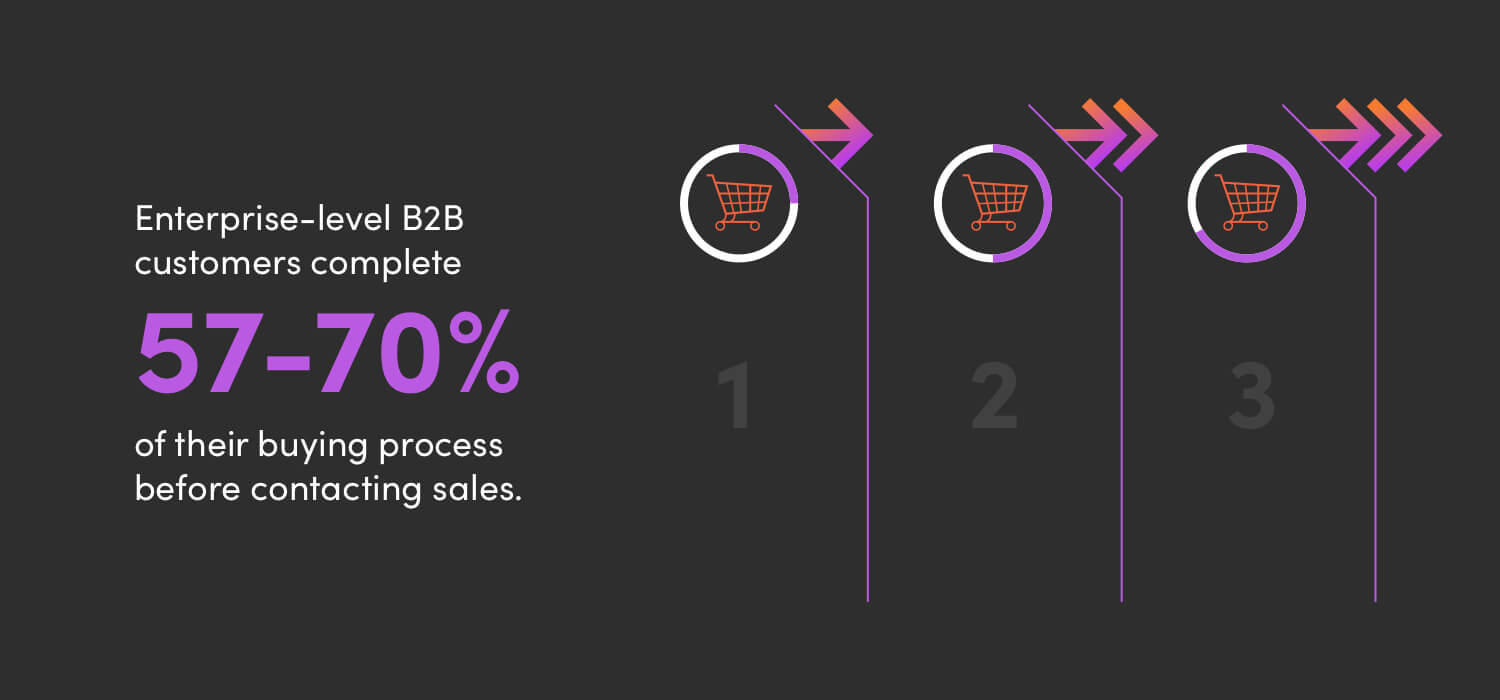
That means that your buyers are searching for and researching fintech solutions online. If you want to be considered by these buyers, you need to invest in the five pillars of inbound digital marketing.
The 5 Key Tactics of Inbound Digital Marketing for Fintech
Your fintech digital marketing strategy should be holistic. This means that your core marketing messages, ad creative, and other content and assets should reinforce a consistent story about your brand’s differentiating value, regardless of the inbound tactics you’re employing.
It also means that data and insights from each channel will inform the others, as well as your overall strategy. For this reason, it’s a great idea to work with a digital marketing partner that has cross-disciplinary expertise in these five core inbound disciplines:
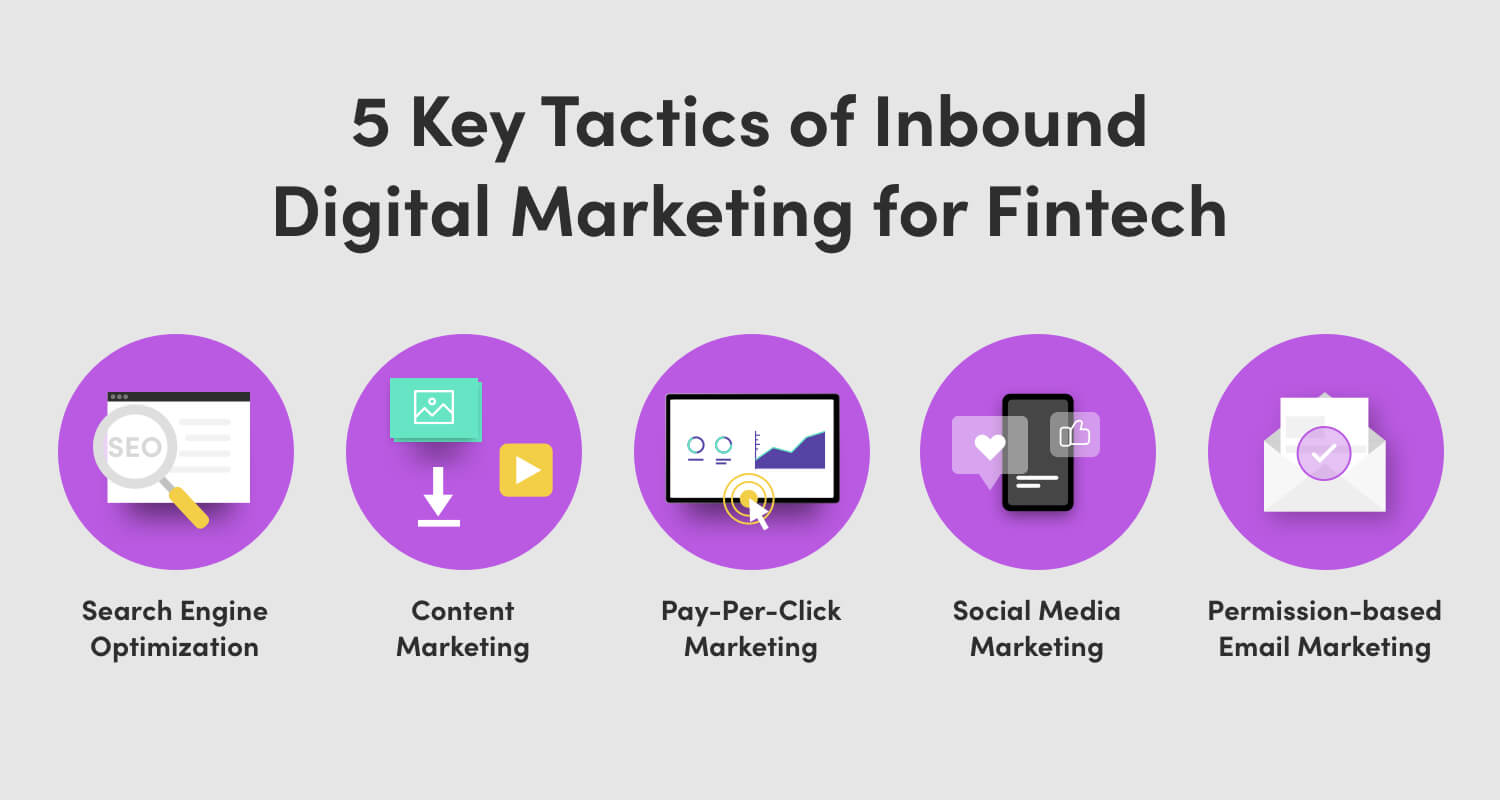
- Search Engine Optimization
- Content Marketing
- Pay-Per-Click (PPC) Marketing
- Social Media Marketing
- Permission-based Email Marketing
Let’s take a closer look at each of these tactics and how they work for fintech brands.
1. Search Engine Optimization (SEO)
You probably already know the basics of SEO. The overall idea is to employ a number of on-page, off-page, and technical best practices to make sure your website shows up as high as possible on the search engine results page (SERP) for keywords that are important to your business.
On-page SEO refers to the practice of including important keywords in your website content, especially in headlines. But it’s not good enough to just drop keywords into your copy and hope for the best — in fact, “keyword stuffing,” or cramming copy with keywords in an unnatural or out-of-context manner — will hurt your search rankings.
Instead, you should focus on searcher intent (in other words, what kind of information and other content a searcher is likely to be looking for when they use a given keyword) and provide well-organized, high-quality content that meets that intent.
Off-page SEO means optimizing non-content aspects of your website. This includes everything from including alt-text for images to building your site’s Expertise, Authority, and Trustworthiness (E-A-T). Google cares a lot about E-A-T, and it looks at both the author of a given piece of content and at your website as a whole.
You can improve your site’s E-A-T by making sure to include an author byline on blog posts and by getting links back to your site from other highly reputable sites. (Also known as “link-building.”)
Technical SEO entails optimizing your website to meet Google’s technical standards for search. A technical SEO audit will uncover opportunities to improve your technical SEO so Google can find, crawl, render, and index your webpages. This involves things like mobile optimization, shoring up your site architecture, using an XML sitemap, and following industry standards for schema markup.
If we lost you on any of that, no worries. Check out our deep dive on SEO for Fintech for more details.
2. Content Marketing for Fintech
Content marketing is in some ways a sub-discipline of SEO — but done right, it goes beyond just attracting search traffic and helps move your prospective customers down the funnel. It begins by producing content — blog posts, videos, infographics, whitepapers, etc. — that’s optimized for a mix of short-tail and long-tail keywords.
Short-tail keywords are phrases one to three words long that are more general in nature. Typically these keywords will have higher search volume, and they’ll also be more competitive to rank for. They are also more likely to attract searchers who are at the top of the funnel, or just beginning to explore a topic without an immediate intent to purchase anything.
Long-tail keywords are (you guessed it) longer than three words. They may be phrased as questions or include specific words that signal purchasing intent. Search volume is usually lower, but traffic may be more qualified, or closer to a point of purchase.
With content marketing, you create content tailored to different search intents and different stages of the funnel, then create paths to move visitors further down the funnel.
For example, you might start with a top-of-funnel (TOFU) blog post on a general topic your potential customers might be interested in. From there, create calls to action (CTAs) to engage visitors in a mid-funnel content offer (such as a how-to video or infographic) — and ultimately drive them toward bottom-of-funnel (BOFU) offers such as product demos.
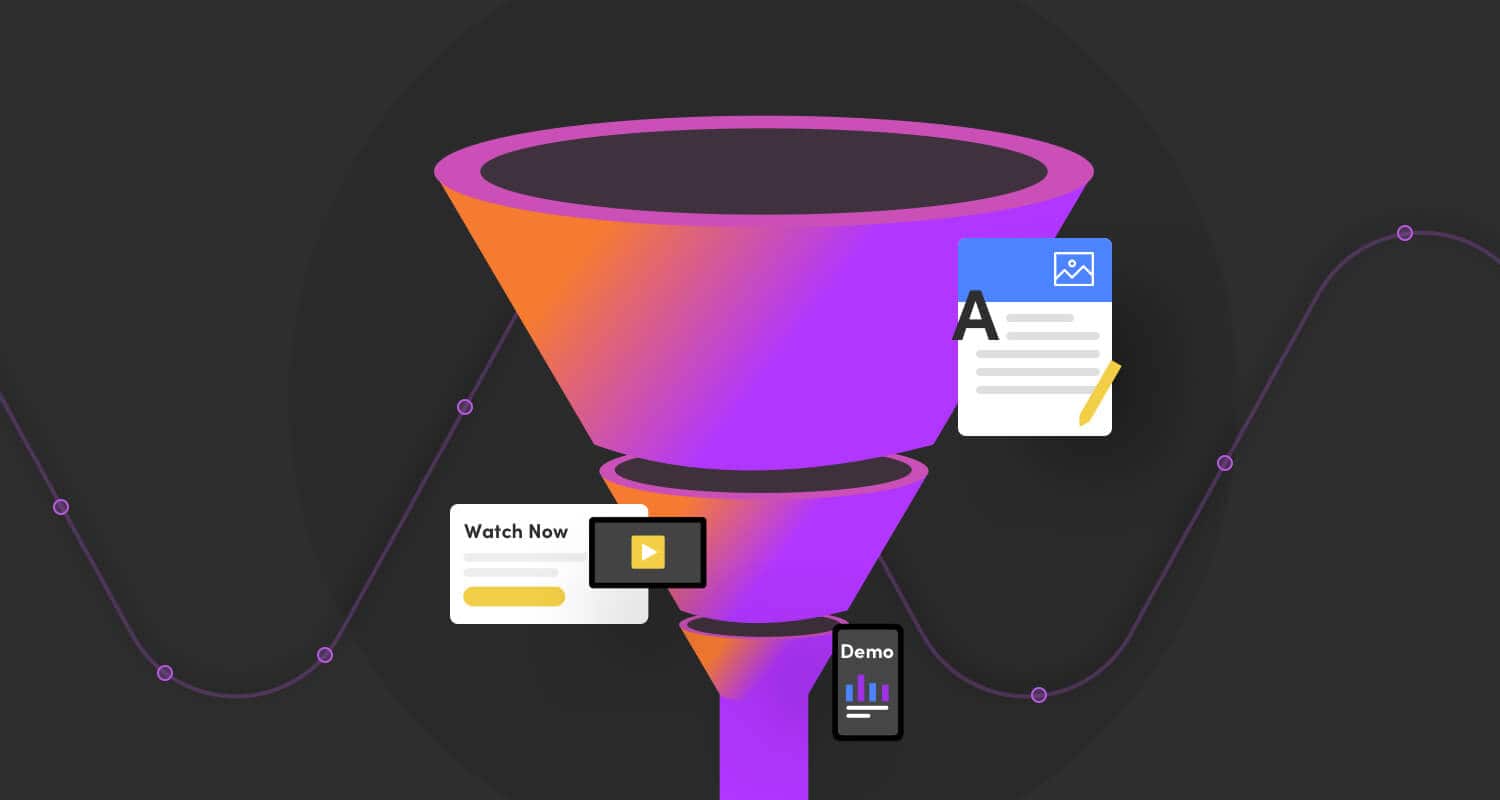
3. Pay-Per-Click (PPC) Marketing
First of all, let’s clear up some confusion about PPC. Is it really inbound marketing, or is it an outbound tactic? Because it involves paying for ad space, some inbound purists put it in the latter category. We consider it a pillar of inbound marketing for a few reasons:
- With PPC, you only serve ads to people who are searching for your keywords. Yes, they are paid ads, but they are designed to offer something valuable and relevant to searchers, rather than interrupting them with something they didn’t ask for.
- PPC and SEO are two sides of the same coin, and they should almost always be used in tandem. That’s because SEO is a long game, and PPC will help drive traffic to your site while your SEO content picks up steam. Just as importantly, you can analyze conversion data from your PPC campaigns and use it to inform your SEO strategy — and vice versa.
For fintech companies looking to get more leads through PPC, here’s how to get started:
- Keyword research. Just like with SEO, you want to focus on searcher intent and choose keywords that have a high value for your business.
- Competitor research. Use a tool such as Spyfu to figure out what keywords your competitors are targeting with PPC campaigns. Can you create offers and ad creative to beat that competition? While you’re at it, type your brand name into a search engine. Are competitors’ ads pushing your website down the SERP? You might consider running ads on both your own and your competition’s branded keywords.
- Conversion landing pages. Using what you know about searcher intent, create landing pages that drive conversions, whether that means sending users to specific webpages, crafting relevant downloadable offers, or other types of conversions, such as a form to request a product demo.
- Ad creative. Finally, make sure your ad creative, including copy and any images, video, or other assets are relevant to searcher intent and backed up by your landing page.
4. Social Media Marketing
Just like with search, social media marketing encompasses both paid and organic tactics. Being active on social media can be a great way to increase brand awareness and engagement, have a two-way conversation with your audience, and generate leads. Here’s how:
- Choose your platforms. Where does your audience spend their time online? Are they active on LinkedIn? Twitter? Facebook? Youtube? All of the above?
- Promote your content. Social media platforms are a great place to spread the word about any content you create, including blog posts, whitepapers, case studies, videos, etc. Be sure to include an eye-catching image and a link to the content.
- Run paid ads. Like PPC, paid social ads blur the boundary between inbound and outbound marketing, but they can be a very effective way to engage your audience and generate more leads.
5. Permission-based Email Marketing
So you’ve invested in the previous four inbound marketing pillars, and the leads are coming in. Great! Hopefully a chunk of those leads are ready to be passed on to sales, but many will be marketing-qualified rather than sales-qualified. That’s where permission-based email marketing comes in.
We specify “permission-based” because we aren’t talking about cold emailing. Instead, this inbound tactic focuses on people who have voluntarily given you their email addresses, usually by filling out a form in exchange for a resource. Once you have an “opt-in” email list, you can focus on two basic forms of email marketing:
- Promotional emails. These are generally one-offs promoting a piece of recently-published content, a campaign, a newsletter, or other offers designed to drive traffic and engage your audience.
- Automated lead-nurture emails. With automated lead-nurture emails, you create a series of emails that get triggered by certain actions. The idea is to give your lead-nurture audience content that moves them down the funnel to become sales-qualified.
For example, if someone fills out a form to download a case study, your lead-nurture campaign can kick in to send them a list of related blog posts. If they click on a post, another email gets sent with a call-to-action to set up an appointment with sales.
Learn more about email marketing in this definitive guide for B2B marketers.
Inbound Marketing Tools for Fintech
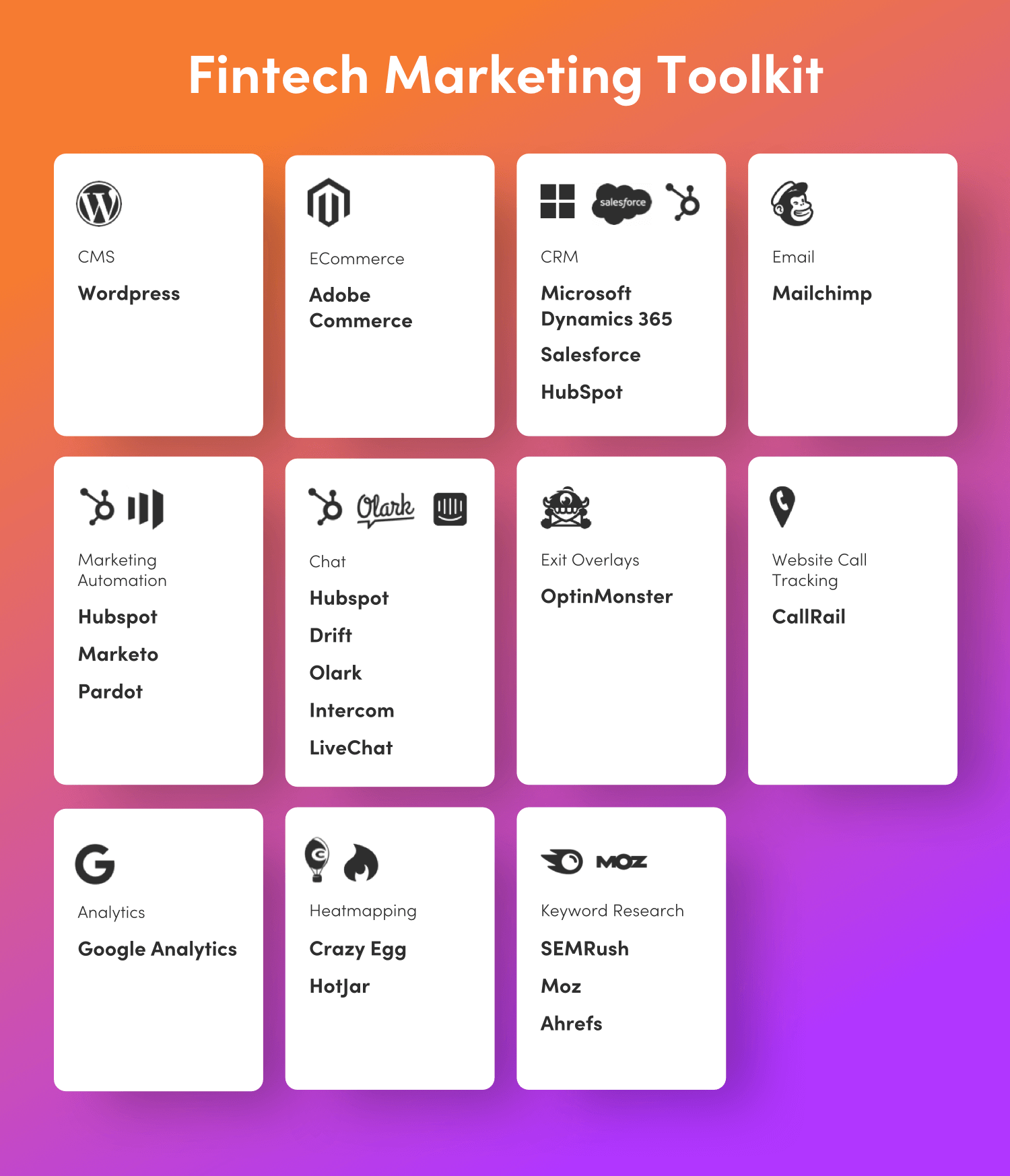
Every inbound marketer needs a variety of software and platforms to help them do their jobs more effectively and efficiently. The choices can seem overwhelming, so we put together a list of our favorites to get you started:
1. Content Management System (CMS)
What It Is: A CMS is an online platform that lets you design and build websites using either pre-made themes or custom designs.
Tools We Recommend: We use WordPress, the most popular CMS on the market, for virtually all our client website builds. Check out this blog post on the benefits of WordPress for enterprise websites to learn why we choose it to build flexible, scalable, and secure websites for our fintech clients.
2. ECommerce Platform
What It Is: ECommerce platforms let businesses manage online sales, marketing, and operations by running the user-facing components of an online business.
Tools We Recommend: We like Adobe Commerce (formerly known as Magento). WooCommerce, an open source eCommerce platform built on WordPress, is another strong option.
3. Customer Relationship Management (CRM) Tool
What It Is: A CRM is a software system for gathering and analyzing customer data in order to improve customer service, sales, and marketing efforts. When integrated with other tools, a CRM lets you determine the value of your marketing tactics in terms of actual revenue generated. Learn more in our blog post about marketing attribution.
Tools We Recommend: When it comes to CRM solutions, Microsoft Dynamics 365, Salesforce, and HubSpot are all industry juggernauts (for good reason) and are pretty safe bets for any business.
4. Email Marketing Platform
What It Is: Email marketing software is designed to help businesses plan, execute, automate, and monitor the success of email marketing campaigns.
Tools We Recommend: When it comes to the best email marketing software in the business, there’s no question that MailChimp is the clear winner.
5. Marketing Automation
What It Is: Marketing automation refers to any software system designed to make it easier for businesses to streamline repetitive tasks and market across multiple channels at the same time.
Tools We Recommend: There’s a vast array of marketing automation platforms on the market, but Marketo, Pardot, and HubSpot are three of the most popular for B2B companies.
6. Live or AI Chat
What It Is: We’ve all seen chat windows pop up on websites. With live chat, users can interact with a customer service representative in real time. AI chatbots come with various degrees of functionality, but generally they supply automated responses to questions and gather user data for lead generation.
Tools We Recommend: Olark, Intercom, Drift, and LiveChat are some of the biggest names in the game right now and are all used by enterprises around the world. For chatbot functionality, we like SnapEngage and HubSpot.
7. Exit Overlays
What It Is: An exit overlay is that pop-up that appears just as you’re about to close a webpage. Exit overlays typically advertise some sort of special offer or discount to recapture the visitor’s interest and lure them back in. We know just how effective exit overlays are because we’ve seen the results first hand: Using an exit overlay prompt, we were able to grow our email list subscription rate by 97%.
Tools We Recommend: OptinMonster is the clear leader of the pack when it comes to exit overlays.
8. Website Call Tracking
What It Is: Website call tracking enables businesses to trace the origin of phone leads by inserting a tracking number into paid ads, emails, landing pages, and more. Call tracking fills in gaps in reporting by providing you with a wealth of data-driven insight into which components of your marketing strategy are working and which aren’t.
Tools We Recommend: CallRail is the call tracking software of choice here at Vital because it allows for both source-level and keyword-level tracking.
9. Google Analytics
What It Is: Google Analytics is Google’s free web analytics tool that tracks and reports website traffic. Here at Vital, we use Google Analytics to generate detailed reports on everything from search traffic to social media ROI to page performance.
Tools We Recommend: It seems obvious, but here you go: Google Analytics.
10. Heat Mapping
What It Is: Heat mapping visualizes data that enables you to track the actual time visitors spend interacting with various elements of their website using a warm-to-cool color spectrum. Heat map analysis gives you actionable data you can use to improve your page’s conversion rates.
Tools We Recommend: Crazy Egg is one of the best combination heat mapping and A/B testing tools on the market, but Hotjar is a free, reliable alternative.
11. Keyword Research
What It Is: Keyword research tools give you data on keyword search volume, competitiveness, and broad searcher intent, along with suggestions for related keywords. You can also see which competitors are currently ranking for which keywords, so you can create enriched content that’s likely to outrank them.
Tools We Recommend: Our keyword nerds couldn’t do what they do without SEMRush, Moz, and/or Ahrefs.
Want to Talk Inbound Marketing Strategy for Your Fintech Brand?
Whether you’re just getting started or are looking to improve the performance of your ongoing inbound marketing efforts, we’d love to hear from you. Contact us and someone will get back to you within 48 hours.
